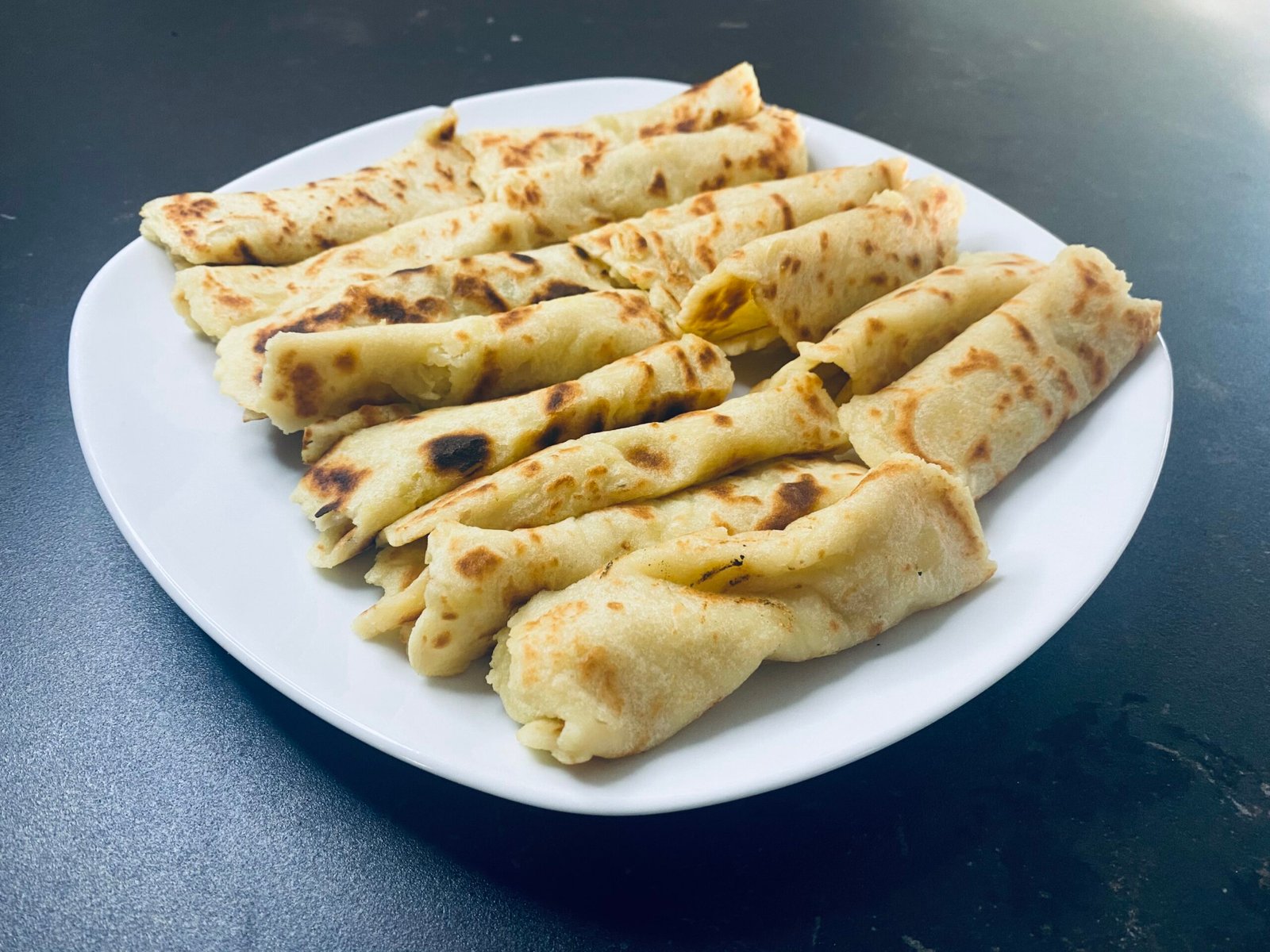Injera is a traditional Ethiopian flatbread: its texture is a little spongy and its taste is slightly tangy. This bread is the main accompaniment to many Ethiopian dishes, such as Doro Wat, and is often used as an edible utensil for scooping food. Prepared from teff, a naturally gluten-free grain, injera is a staple in Ethiopian and Eritrean cuisine. Its unique fermentation gives it its distinctive character, both nourishing and tasty. Easy to prepare, this recipe adapts perfectly to gluten-free diets while offering a true immersion in the culinary traditions of East Africa.
Ingredients
Preparation
-
-
Mix the ingredients:
- In a large bowl, mix the teff flour with the warm water to make a smooth, slightly liquid paste, similar to pancake batter.
- Cover the bowl with a clean cloth or perforated plastic wrap to let air through.
-
Leave to ferment:
- Let the dough sit at room temperature for 2 to 3 days , depending on how warm your environment is.
- During fermentation, small bubbles will form on the surface, and the smell will become slightly tangy, a sign that the dough is ready.
-
Prepare the sourdough:
- Once the dough is fermented, remove the milky water that has formed on top. Then remove a tablespoon of dough to make a leaven (called "absit").
- Heat a small amount of water (about 50 ml) and mix a spoonful of fermented dough into it to form a thick slurry.
- Let it cool, then incorporate it into the main fermented dough. This improves the texture and flavors of the injera. You can use a blender to make the mixture smooth.
-
Add salt and yeast (optional):
- Add a pinch of salt and yeast if desired. Mix well and leave to rest for an hour under a clean cloth. Mix again before cooking.
-
-
-
Cooking :
- Heat a non-stick pan or cast iron plate (traditionally, a “mitad” is used).
- Pour a small ladleful of batter into the center of the hot pan and tilt it to spread it evenly. The injera should be thin like a pancake.
- Cover the pan with a lid and cook over low heat until bubbles form all over the surface, and the top is cooked (about 2 to 3 minutes). Do not return the injera.
- Carefully remove and place the injera on a plate covered with a cloth so that it remains soft.
-
Repeat :
- Continue until all the dough is used.
-
-
Another version of injera: teff and rice flour
Note
To achieve faster fermentation or adjust the acidity, you can leave the dough in a slightly warmer place, or even use some of the fermented dough (sourdough) to start a new batch, which gives a more complex taste to the over time.
I added rice flour (100 g) to half of the dough to test a second type of Injera. The pancake was easier to make. They were also very good, sweet but still with the slightly tangy taste of traditional injéra.







